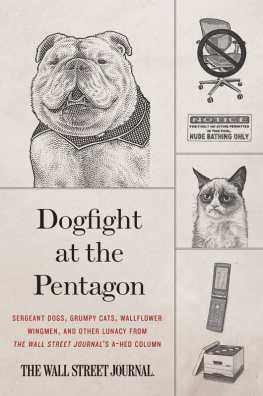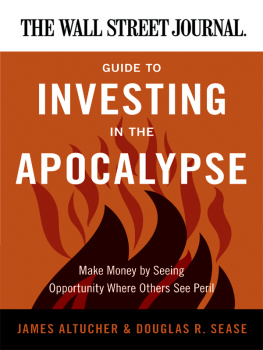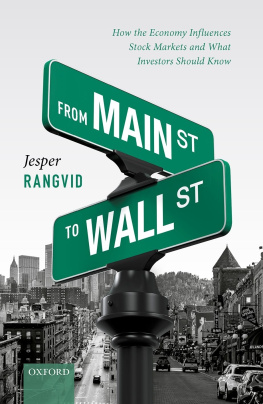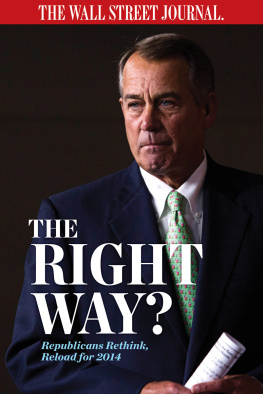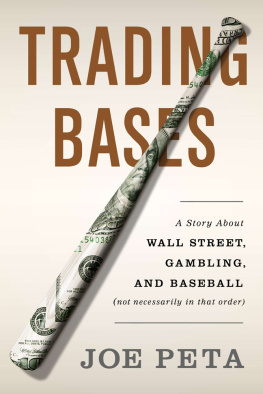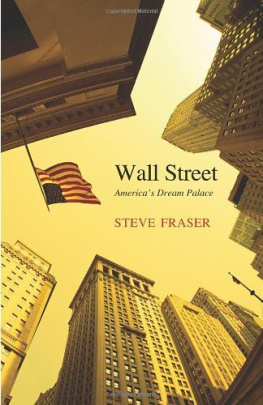Barry Newman , a New Yorker, joined The Wall Street Journal in 1970. In 43 years as a staff reporter, he wrote more than 400 feature stories for the front page from more than 65 countries. He is a winner of the Overseas Press Clubs award for explanatory journalism and the National Press Clubs award for humor writing. His stories have been collected in several books, including East of the Equator , The Literary Journalists and Floating Off the Page . He is at work on a new collection of stories from The Journal , combined with essays on how he reported and wrote them, to be published by CUNY Journalism Press.
Visit www.AuthorTracker.com for exclusive information on your favorite HarperCollins authors.
Australia
HarperCollins Publishers (Australia) Pty. Ltd.
Level 13, 201 Elizabeth Street
Sydney, NSW 2000, Australia
http://www.harpercollins.com.au
Canada
HarperCollins Canada
2 Bloor Street East - 20th Floor
Toronto, ON, M4W, 1A8, Canada
http://www.harpercollins.ca
New Zealand
HarperCollins Publishers (New Zealand) Limited
P.O. Box 1
Auckland, New Zealand
http://www.harpercollins.co.nz
United Kingdom
HarperCollins Publishers Ltd.
77-85 Fulham Palace Road
London, W6 8JB, UK
http://www.harpercollins.co.uk
United States
HarperCollins Publishers Inc.
10 East 53rd Street
New York, NY 10022
http://www.harpercollins.com
H ADLEY, Mass.The Green Library at Stanford University houses William Saroyans mustache clippings. Timothy Learys Nintendo Power Glove has been acquired by the New York Public Library. At the Harry Ransom Center of the University of Texas at Austin, Norman Mailers bar mitzvah speech is preserved in perpetuity.
Authors, take notice: Remember those crates of scratch pads and tax returns in the garage? The trunkful of hotel bills and childhood doodles in the garden shed? Dont junk any of itnot before you call up somebody in Ken Lopezs line of work.
Mr. Lopez, who has a book-jammed office in this small town, is a brokerone of a dozen in the countrywho deals in the flotsam of authorship. He sells to rich research libraries, which sort it and shelve it so scholars can mine it for clues to creativity.
If you had William Faulkners laundry list, would you care? Mr. Lopez said not long ago. The answer is, Yes. So if its true for Faulkner, he added rhetorically, it could be true for you.
Being dead helps but isnt required. Mailer sold his 1,062 boxes for $2.5 million in 2005 and died in 2007. In 2003, Bob Woodward and Carl Bernstein sold 83 Watergate boxes, also to the Ransom, for $5 million. After 20 years of marketing for the likes of William S. Burroughs (dead) and Peter Matthiessen (alive), Mr. Lopez puts prices for interesting paper piles at $30,000 to $300,000.
His emphasis is on the paper. Digitization has made correspondence more searchable but less revealing. Still, Wendy Cope, a poet of light verse, recently sold the British Library 40,000 emails for $50,000. A lot of them are extremely boring, she told the BBC. One of her poems explains why. Dont answer emails, it goes, when youre drunk.
Typescripts that used to be cut, pasted and blue-penciled are spotlessly digital now. Word processing has obscured the process of writing. The archaeology of it, seeing paths not taken, Mr. Lopez said early one Monday. At this point, thatll all be lost.
Long-haired and 60 years old, he had just driven a Penske rental truck from Arizona with the trove of a Native American writer, N. Scott Momaday. His office this day was crowded with the uncensored (and as yet unsold) dispatches of George Weller, a reporter who sneaked into Nagasaki after the atomic bomb dropped. In tight quarters, Mr. Lopez repacked Mr. Momaday and got him on the road againfor New Haven.
Yale Universitys Beinecke Library would be the new home of the Momaday archive100 boxes of manuscripts and shopping lists. I wish Id kept it all in longhand, says Mr. Momaday, who is 78 and lives in Florida now. It would have been much more valuable. Yale wont name its price. Mr. Momaday will: $500,000. Mr. Lopez gets 15%.
Once, writers like Mr. Momaday gave their stuff away. But in 1969, Congress ended tax deductions for creators of their own gifts. Richard Nixon signed the law and, in donating his papers, ran afoul of it himself when his advisers tried to claim a deduction after the law took effect. Dozens of libraries with big budgets have since been bidding up the stashes in authorial attics. Hundreds, less endowed, are left with shelf space reserved for literary altruists.
Authors would love for us to have their archives, but they want to sell, says Chantel Dunham, who raises money for the University of Georgias libraries in Athens, Ga. People ask for hundreds of thousands. Were a state institution. We cant pay anything like that.
Emory University, 65 miles away in Atlanta, can. In 2006, for an undisclosed amount, Salman Rushdie sold it 200 falling apart, crappy cardboard boxes, as he said at the collections opening in 2010. After Emorys archivists put his mess in order, Mr. Rushdie capitalized on their tidiness to research his own 2012 memoir.
Some authors, like Philip Roth, say they want their scribbles burned after they die, so the public wont root through them. (Kafka tried that; it didnt work.) Some toss their trash, like ordinary folk do. A few devote deep thoughts to the fate of their Post-it Notes.
What if Im one of those people that people study? says Ronlyn Domingue. What am I going to leave behind for them?
Ms. Domingue, who is 43 and lives in Baton Rouge, has one published novel with two on the way. She writes in longhand, types it up, makes changes by hand and dumps it all into a box in her closet marked Archive. She has willed the box to Louisiana State University, her alma mater. I never thought of asking for money for it, she says.
Ms. Domingue hasnt met Mr. Lopez.
A lot of writers dont know about this market, he was saying as he backed the Penske truck into a dock at a Yale warehouse and delivered Mr. Momadays crates into the hands of their buyers.
Four archivists wheeled them into a room of wood-topped tables. Mike Rush lifted the lid on Mr. Momadays LP records. The first few minutes get your heart racing, he said, flipping through them.
On the floor and surrounding shelves, the accumulations of others were in early stages of screening. A box from a photographer, Lee Friedlander, had recently yielded a salt shaker that contained a grayish powder. It turned out to be the ashes of Robert Heinecken, an artist who died in 2006, mailed on his behalf as a posthumous gift.
That was fun, said Mr. Rush, reaching into playwright John Guares cache. He extracted an envelope from which slid five watches and three wallets, one containing a note for 200 Greek drachmas. Mr. Rush said, We get uncashed checks. We send them back, if recent.
The Beinecke doesnt make its own checkbook public, but it buys enough stuff each year to fill 1,000 feet of shelving; 7,000 feet of it has yet to be cataloged. So Mr. Momadays boxes would have to wait their turn.
Mr. Rush, however, was taking one step right away: Bagging them up to be left for three days, at 30 degrees below zero, in Yales industrial blast freezer. Its one thing to buy the contents of a living writers cellar, but the Beinecke Library had to be sure that nothing else Mr. Lopez sold it was still alive.
B AGRAM AIRFIELD, AfghanistanFlying an F-15E Eagle fighter may be the sexiest job the military has to offer.
The least sexy may be bagging up the beaks, talons and feathers smeared on the jets exterior when an Eagle hits a sparrow at 500 miles per hour.
Lt. Col. Del Johnson does both. His day job is firing up the afterburners and flying combat missions out of Bagram, the main U.S. air base in Afghanistan. But as flight safety officer, his duties also include making sure that every time war bird and regular bird collide, the latter is scraped off the former and shipped to scientists at the Smithsonian Institution.
Next page
